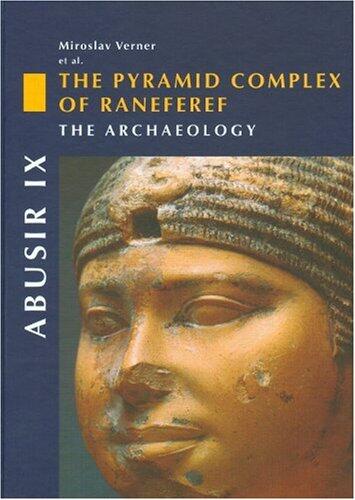
Abusir IX: The Pyramid Complex of Raneferef, I: The Archaeology
No ratings yet
Format
Hardcover
Pages
500
Language
English
Published
Oct 12, 2006
Publisher
Czech Institute of Egyptology
Edition
Vyd. 1
ISBN-10
8020013571
ISBN-13
9788020013576
Description
Miroslav Verner delves deep into the enigmatic world of ancient Egypt, focusing on the pyramid complex of Raneferef in Abusir. His meticulous research offers an engaging exploration of the site's archaeology, revealing the intricate layers of history that shape our understanding of this remarkable civilization. The book harmoniously blends academic rigor with accessible narratives, making it appealing to both scholars and enthusiasts alike.
The author presents a wealth of findings that highlight the architectural prowess and cultural significance of the pyramid complex. Through detailed descriptions and analyses, Verner invites readers to ponder the mysteries that have shrouded these ancient structures for centuries. Each chapter provides a narrative that uncovers not only the physical artifacts but also the societal context in which they were created.
Richly illustrated and thoroughly documented, this work includes contributions from various experts, adding depth and multiple perspectives to the findings. The bibliography serves as a valuable resource for those wishing to delve further into the complexities of ancient Egyptian society.
As readers traverse the landscape of Raneferef, they are challenged to consider the implications of these archaeological discoveries. Verner’s insights shed light on not just the past but also the enduring legacies that continue to shape modern perspectives on history and archaeology.
The author presents a wealth of findings that highlight the architectural prowess and cultural significance of the pyramid complex. Through detailed descriptions and analyses, Verner invites readers to ponder the mysteries that have shrouded these ancient structures for centuries. Each chapter provides a narrative that uncovers not only the physical artifacts but also the societal context in which they were created.
Richly illustrated and thoroughly documented, this work includes contributions from various experts, adding depth and multiple perspectives to the findings. The bibliography serves as a valuable resource for those wishing to delve further into the complexities of ancient Egyptian society.
As readers traverse the landscape of Raneferef, they are challenged to consider the implications of these archaeological discoveries. Verner’s insights shed light on not just the past but also the enduring legacies that continue to shape modern perspectives on history and archaeology.
Reviews
Reading Log
No reading logs found
Start tracking your reading progress to see logs here
Add Your First Reading LogNotes
Transaction Log
No transaction logs found
Start tracking your book transactions to see logs here
Add Your First Transaction Log